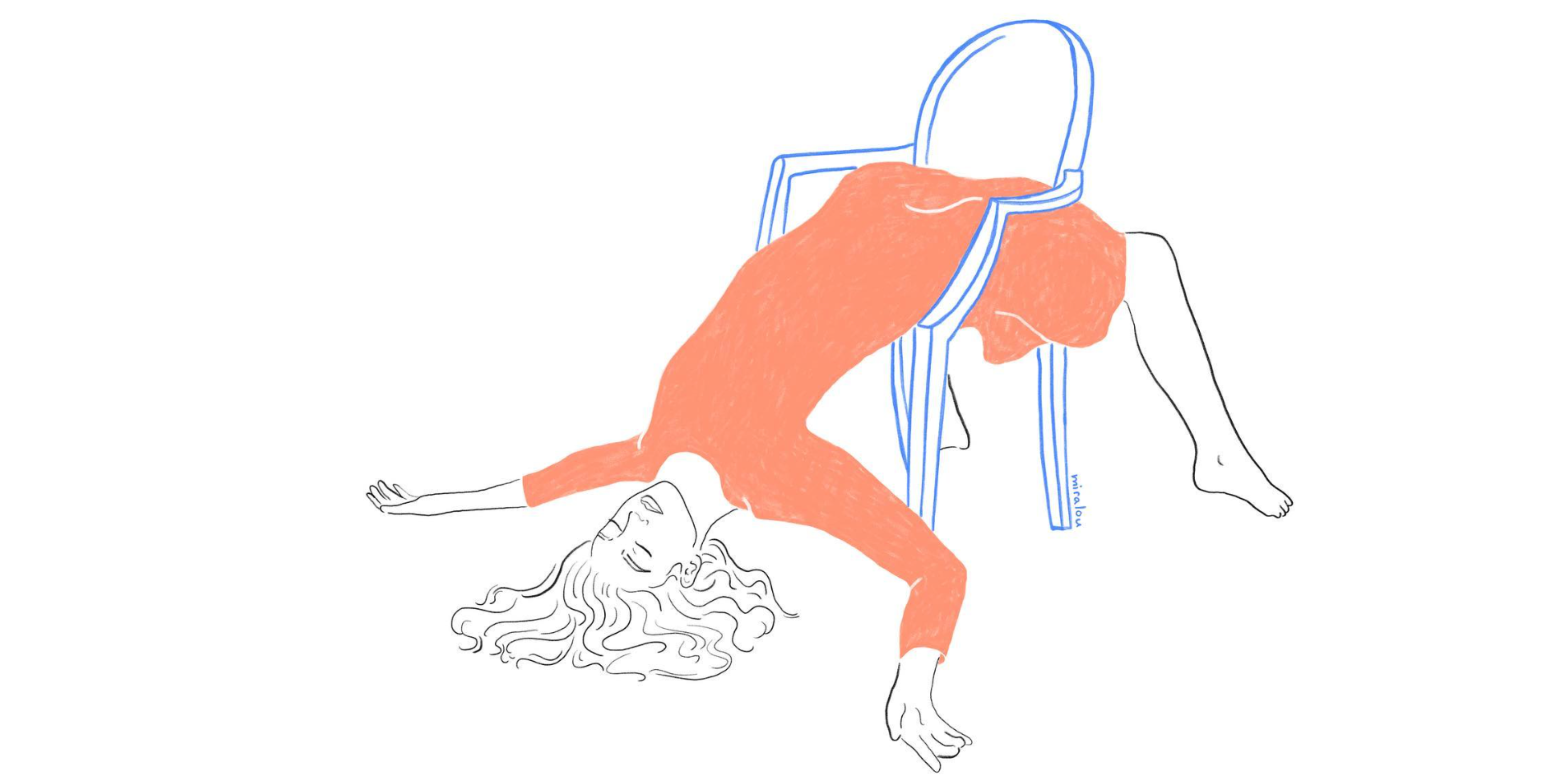View this post on Instagram
{This article is written in partnership with Yarlap®—they’re dedicated to helping us enjoy the benefits of better pelvic floor health and we’re honored to work with them. ~ ed.}
~
A friend recently invited me into a small circle of mothers and their tween daughters who meet to talk about the immense changes that happen in puberty. So far, it’s been wonderful, and significantly less cringy than it sounds. The group has offered me a chance to reflect on how confusing puberty was for many of us, and hope that our daughters might have a less isolating experience.
But my main takeaway is why don’t we have groups like this for women in perimenopause and menopause?
As a culture, we’re slowly getting better at talking about the transformations women’s bodies endure during puberty, pregnancy and birth. Still, nothing could have prepared me for the drastic changes my pelvic floor experienced in my childbearing years. An avid Kegler and yogi, I thought I was prepared. Fun fact: I have unusually dexterous feet and can remove my socks and roll them together into a ball without using my hands. I’m not saying that my vagina could fold socks, but those muscles were strong.
Strengthen your Pelvic Floor, easily and correctly >>
But my son’s birth was extremely difficult. He was in a posterior position, which meant the back of his skull was grinding against my tailbone. By the time I finally reached the pushing stage, I was depleted and exhausted. Then, I pushed for four hours. My vagina was a battlefield. The sling of muscles that comprised my pelvic floor was more like a collapsed hammock.
Not long after my second child was born, I started pelvic floor therapy.
For months, pelvic floor therapy was my part-time job. I “retrained” my bladder by cutting down on coffee and doing exercises to help prolong the time between peeing. I attended sessions where therapists attached biofeedback leads to my most private parts. I learned how to isolate my lower abdominals and pelvic floor at the same time, and eventually graduated to a group exercise class that used Pilates machines to continue strengthening our pelvic floors.
And… it worked. While my pelvic floor was never as strong as it was before having children, I was able to bring my kids to the playground without worrying where the nearest bathroom was. I could even indulge in gentle bouncing with my kids at trampoline parks without incident.
Retrain your muscles with this proven device & Take $50 off >>
Then, life happened.
My babies stretched into tweens and teens, while I muddled through middle age. My pelvic floor slipped off of my priority list.
Those dribbles of pee I couldn’t quite hold in while rushing to the bathroom? That was my pelvic floor, clearing its throat.
As it turns out, perimenopause (the period of time, which can be up to 10 years, during which our reproductive hormonal fluctuations begin, leading up to menopause) and menopause (defined when a woman has gone 12 months without having a menstrual period) is, like pregnancy and new motherhood, a time when we’re likely to experience dramatic changes in our pelvic floor. A 2021 study stated that the symptoms of reduced estrogen and ovarian function can include “atrophy of the pelvic floor muscles and ligaments, reduced blood supply, and degeneration of the mucosal epithelium may occur.”

Wondering what mucosal epithelium is? Me too.
A little Googling took me down a fascinating rabbit hole. I knew our vaginas were complex organs, but I didn’t understand quite how intricate they are. The tissue of our vaginas consists of multiple layers of cells—picture a diagram of the earth’s strata, or a layer cake. When we experience the dramatic estrogen drop of menopause, these intricate layers thin out, which is why we hear about symptoms like dryness, irritation or pain.
Perimenopausal and menopausal ladies, if it feels like our vaginas are changing, it’s because they are. When we’re considering the benefits and risks of hormone replacement therapy, women should know that HRT can help us avoid vaginal atrophy, osteoporosis, and possibly even dementia.
When I heard about the Yarlap® device, which uses Neuromuscular Electrical Stimulation to entice our pelvic floor muscles into doing Kegels on their own, I was intrigued. I recalled the brutal regimen that had been pelvic floor rehab. It had worked, but it had also required an enormous investment of time, money, and humility that I can’t imagine repeating. Why not try the Yarlap®? I thought.
The Yarlap® device consists of a little battery-powered box where you can adjust the settings, connected via a wire to a little wand that goes in the vagina. The first few times I used the device, I didn’t feel much at all, so I went back to re-read the instructions. Whoops. I’d been Yarlapping wrong, with the part of the device that sends the electrical signals facing the wrong way. The next time I used the device, I made sure that the silver parts, which deliver the electrical stimulation, were facing my hips. And there it was— that definitely feels different. The sensation is neither painful nor pleasurable; I’ll usually relax with a book for the 15-20 minutes that the Yarlap® takes to do its thing.
One of the biggest lessons I’ve encountered in the past few years is the realization that I don’t have to do everything in the hardest way possible. The Yarlap® is a perfect example of embracing a solution that’s both easy and convenient. The device can be used at home. The sessions only take 15-20 minutes, during which you can catch up on emails, listen to a podcast or read a book while the Yarlap® does my Kegels for me. Imagine that!
Maintaining our pelvic floor health is about more than avoiding incontinence. The 2021 study I mentioned earlier concluded, “pelvic floor muscle strength is correlated with sexual function, especially in terms of libido, sexual arousal, orgasm and sexual satisfaction.” Our pelvic floor health, in other words, is directly related to our sexual health.
Kick your orgasms up a notch & Take $50 off >>
I’ve been using the Yarlap® for just over a month now. While pelvic floor progress can be a little tricky to measure, I’m no longer experiencing the dreaded dribbles. Using the device regularly has also made me more mindful of my pelvic floor in general. I’m not ready to try folding socks yet, but I feel optimistic that a little attention to my lady hammock will benefit my pelvic floor health, and in turn, my general health.
And one of these days, let’s start creating more community around perimenopause and menopause. We can share our stories and feel less alone as we try to summon acceptance around our once again changing bodies.





Read 8 comments and reply